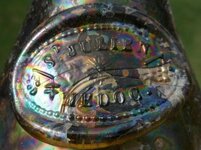rschmidt
Tenderfoot
- Jul 1, 2016
- 7
- 6
- Detector(s) used
-
Fisher F19,
Fisher F44,
Garrett Pro-Pointer AT
- Primary Interest:
- All Treasure Hunting
I believe it dates to the 1770-80's...


 Might be a while before we can do that.
Might be a while before we can do that.